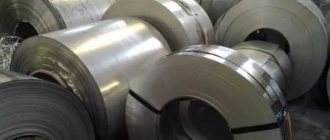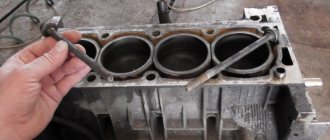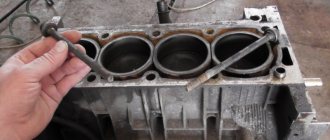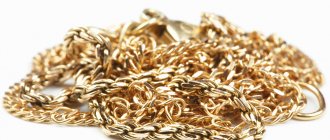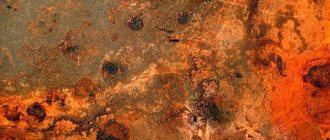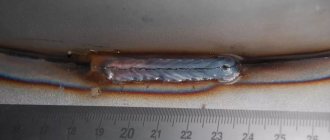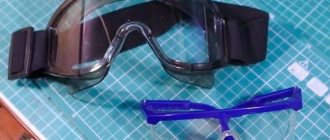Why does copper turn green?
Copper is a very common metal used in many industries, such as electrical manufacturing and construction. Copper is very often used in various alloys. You should also know that copper has a significant effect on the human and animal body. As a rule, when we talk about the natural state of copper, it has a pinkish or peach color.
Like all metals, for example, iron, copper is subject to a phenomenon called oxidation. For iron, this process is also called “corrosion.” When iron rusts (oxidizes), it takes on an orange-brown color, while copper oxidizes green.
Oxidation occurs after contact with air and moisture. During the process of oxidation, an element, in our case copper, loses electrons when interacting with another element. Copper, reacting with oxygen contained in the air, gives up electrons, as a result of which copper ions are formed on the surface, which then enters into a further reaction with oxygen, forming copper oxide. The color of copper oxide is just green.
Copper, unlike aluminum or iron, does not react with water - only with oxygen in the air. The green layer that forms as a result of the oxidation process is called patina. This patina is very different from other oxidation products; it does not penetrate into the metal, but remains only on the surface. In contrast to rust on iron, which destroys the metal, patina becomes a kind of protective layer that protects the inner surface of copper from aggressive environmental influences . As a famous example of this phenomenon, consider the Statue of Liberty in New York. Battered by wind and salt water since 1886, the statue has been perfectly preserved, and its famous green color is today one of the most recognizable symbols in the world.
Source
Bronze cancer
It is worth noting that the green coating on monuments is a product of corrosion, which restorers call patina. Natural patinas are divided into “noble” and “wild”. “Noble” is dense; it absorbs little moisture from the atmosphere. Until the mid-20th century, it was believed that a “noble” patina, covering the surface of a monument, completely protected it from further corrosion. “Wild” patina is loose, it absorbs a lot of moisture from the atmosphere, copper from the surface of the monument turns into salts and oxides. Because of this, the surface becomes distorted and destroyed over time. There is even such a thing as “bronze disease” or “copper cancer,” which can be caused by a “wild” patina. Let me give you a few examples. In Paris there is a bronze monument to Honore de Balzac, made by the great late 19th century sculptor Auguste Rodin. By the beginning of the restoration, in 1986, the head and top of the figure were covered with spots and streaks of light green patina, completely destroying the perception of this sculpture. Another example is Klodt’s horses on the Anichkov Bridge in St. Petersburg. By the beginning of the restoration in 1999, they were also completely covered in green spots and streaks. So, the surface of the monument to Balzac was covered with a “noble” patina, and the surface of Klodt’s horses was “wild” and completely affected by the “bronze disease”. Through a microscope it was clear that the surface of the bronze was completely pitted. In addition, three of the four slabs sagged under the weight of the figures. They were cut by cracks. All these are traces of time. Therefore, in the case of Klodt’s horses, it was necessary to eliminate the cracks and stop the process of destruction of the monument.
Khimik.PRO – solving chemistry problems for free
How does copper corrosion in atmospheric conditions? What causes the formation of a green coating on copper products after prolonged exposure to air? How can we explain the transformation of green to black coating after heating copper?
The solution of the problem
Let's consider how copper corrosion under atmospheric conditions.
Depending on the composition of the environment and many other factors, a very thin protective film consisting of copper oxides and pure copper oxide is first formed on the copper surface in the atmosphere. The formation time of this film can reach several years. The surface darkens a little and becomes brownish. Sometimes the film can be almost black (largely depends on the composition of the corrosive environment). After the formation of the oxide layer, copper salts with a greenish tint begin to accumulate on the surface. Copper corrosion
The resulting oxide of copper and salt is also called patina. The color of the patina ranges from light brown to black and green. The color of the patina depends on the quality of the surface treatment, the composition of the metal itself and the environment, and the time of contact with the corrosive environment (from internal and external factors). Copper corrosion. Copper oxide is red-brown in color, copper oxide is black. Blue, green, blue and other shades of patina are caused by various copper minerals (sulfates, carbonates, chlorides, etc.). Patina is neutral in relation to the base metal, i.e. does not have a harmful effect on copper (except copper chloride). Salts and oxides that form patina are insoluble in water and have natural decorative and protective properties in relation to the copper surface. Copper corrosion
Under atmospheric conditions, under the influence of oxygen, copper is oxidized, resulting in the formation of copper oxide (I) (copper oxide):
The color of this compound is brownish-red.
With further oxidation, black copper (II) oxide is formed:
Copper corrosion. Electrons move from copper to oxygen. Conclusion: copper oxidation occurs and an oxide film forms on the surface of the product.
These compounds protect the metal, but only if the oxide film is not damaged by other inclusions. In this case, copper (II) oxide is the most stable.
Humidity and carbon dioxide after prolonged exposure to air cause the formation of a green coating on copper products - copper carbonate and copper hydroxide (their mixture is called malachite):
After heating copper, the transformation of green to black plaque is due to the decomposition of malachite (green) and the production of copper(II) oxide (black):
Source
additional information
St.12Х18Н9 (AISI 304) gives a short spark, colored light yellow with a few red dots appearing from time to time. At the point of contact with the abrasive and at the ends of the branching, the spark beam has a red-yellow color.
St.X12F1 - yellow, short spark, multiple “stars”, the ends are elongated in a line. The area where the abrasive touches is red-yellow. Individual red dots throughout the entire beam.
St. 12X13 - light yellow short spark with branches.
Add a comment Cancel reply
You must be logged in to post a comment.
How to identify metal or its grade
If it is magnetic, then it is ferrous metal or one of the components of such metal – ferrous metal. Everything else is not magnetic.
Stainless steel is also not magnetic, water does not leave marks on it, and it costs much more than ferrous metal. Color – grey.
Copper is a yellow, even golden metal; when it comes into contact with oxygen, it becomes covered with a dark oxide film, and when it comes into contact with water, it becomes covered with green rust. Copper is more expensive than all non-ferrous metals, only precious metals such as silver and gold are more expensive.
Aluminum is a silvery metal, flexible and lightweight, easy to cut and bend, and low in price.
Brass is a heavy metal of yellow color with a slight redness, very similar to gold.
Bronze is dark brown in color, the surface is grainy. Costs about the same as brass. Typically, non-ferrous metals are received in the same place as ferrous metals are received. Precious metals are accepted by special organizations that have special permission from the authorities.
The most popular non-ferrous metal at collection points, for which no expense is spared, is copper. True copper is defined as follows:
If the metal is in good condition, then it will certainly have a golden-pink hue, and in the air it will quickly disappear under a brown-green-blue oxide film.
Scrap metal such as water pipes, pipes for air conditioners, heat sink pipes (coolers) is almost certainly copper, especially in the case of coolers, since it is not practical to remove heat with more expensive silver and gold, and copper has few competitors here.
Why give it up? Why keep unnecessary things at home, in the garage or outbuildings? If an item is lying idle, then why not scrap it and make money on it? Moreover, the very high price of non-ferrous metals simply encourages this.
This allows the state to save money. Copper is needed for many needs, and if it is possible to extract it through processing without spending enormous amounts of energy on mining ore, transporting it and obtaining the metal, then this is very good for the economy.
Green copper
Galchiy Proran is a deep ravine that was flooded during the formation of the reservoir.
Sprawling poplars and dense bushes once grew around. The interweaving of driftwood at the bottom is all that remains of them. Proran communicates with the Volga and Sviyaga. You won't find a more ideal place to catch predators. That morning the pike struck often. The fry jumping out of the water and the characteristic chomping sound indicated that the perches were also out hunting. I was in a hurry to catch live bait as quickly as possible. He lowered the feeder, put a worm on the hook of the float rod and began to catch it in the wire. I made a cast, a second one... Without success. I replaced the worm with maggots, but that didn't do anything either. The sun moved confidently across the sky, the splashes of predators were heard less and less often, but I still didn’t have a single live bait, and the zherlits were inactive.
They used dough, bread, steamed oats. The float quickly ran the measured distance, lay down on its side, and everything started all over again. I could clearly see the bottom near the bow of the boat, driftwood with green beards of silky mud. I caught a strand and hung it on a hook. The fish continued to remain indifferent for some time. But near the mud, the ubiquitous fry sparkled with silver droplets. Some fish moved under the snag. I looked closer and saw perches. One of them quickly flew out of cover, grabbed the prey and quickly ducked under a snag.
“Should I throw them a spinner?” - a thought flashed. I took out a box in which I could hardly find a single spinner made of once red, but over time, green copper. I re-rigged my fishing rod and slowly lowered the lure into the water. The depth is only twenty centimeters. A shadow darted from under the driftwood. I lifted the rod out of the water with lightning speed. The red-feathered beauty, having described an arc, plopped into the boat.
Things went as well as possible. The perches raced towards the spoon and became my prey. With the excitement, caution was lost. After another cast, the spoon caught on a snag. I had to undress, climb into the water, and then put the boat in a new place. But I caught several perches and was hooked again. To get rid of snags and not lose the only lure, I lit a match and released the hook over the flame.
Moving towards the exit from the hole, I occasionally pulled out large striped predators. Already at the very exit, a nimble little bee was tempted by the spinner. Having bitten the line, he safely went into the depths.
Patina and its types
Patina is a protective film that covers copper when oxidized in air. It is necessary to protect products from further destruction. Patina can be divided into several categories:
Patina can appear in different shades naturally
The noble patina on copper objects is black. It protects it from further oxidation and surface destruction.
“Wild” patina has a green patina. It appears on products in a humid environment. Why is it not appreciated? Because this appearance is a consequence of improper care of the metal, as a result of which depressions appear on it, which are corrosion.
It manifests itself in the formation of tricks on the metal, that is, numerous depressions. Wild patina from the surface of products can only be removed by mechanical cleaning. This can spoil the appearance, since the green coating will be removed along with its top layer of metal.
Patina is also divided into 2 types:
A natural patina appears on the surface of products over time. And it is she who is considered the most valuable. It takes a little time for it to appear. The thin film will be visible within a year. A good thick layer appears only after 80–100 years. It all depends on weather conditions, the climate of the country and the composition of the atmosphere.
Artificial patina is especially popular now. Its color is made close not only to noble black, but also to green. This process is called patination. It works better on bronze than on brass.
But why is artificial patination not used everywhere? To make copper interior items modern, they try not to use it. Because the basis of artificial patina is varnishes, waxes and paints that isolate the metal and prevent it from being covered with a valuable natural coating.
Plaque of time
In many countries, for example, in Finland, France or the Czech Republic, monuments are green. There they are not cleaned of their patina, considering this a noble manifestation of time. In St. Petersburg, on the contrary, they believe that such a “pattern of time” ruins masterpieces. Who is right?
Vladimir Sorin, an artist-restorer and one of the main specialists in metal restoration in St. Petersburg, expressed his point of view to AiF-Petersburg.
— From the technical side, the corrosion process is considered harmful, since the metal surface of the product turns into salts and oxides. However, when it comes to monuments, the situation is much more complicated. After all, on the one hand, the monument must bear the traces of time, and on the other, these traces disfigure the work of art. What should a restorer do: what details to recreate, what traces to destroy, in what form and by what means?
Three ways to make patina at home
Wild patina on the Statue of Liberty
The first method is ammonia patination. To do this you need to take a plastic container. Place a couple of paper or regular towels on the bottom. Moisten them with ammonia. Then sprinkle with coarse table salt. Place the copper object and sprinkle it with salt. And then cover with a few more towels and pour ammonia over everything.
The length of time the product is kept in the container depends on the desired result. The first changes will be noticeable after two minutes. But the noble green color will be clearly visible only after 2 days. Then you should rinse the product and dry it.
The second method is baking. You need to take 5 parts vinegar to 1 part salt and mix them. The amount of solution will depend on the dimensions of the product. It is necessary that the metal is completely immersed in the liquid. It takes an hour to keep the product in the solution. After the time has passed, remove it and place it on a baking sheet, which must first be covered with foil.
And bake the product at a temperature of 200 degrees until greenish. Afterwards, you need to dip the metal into the solution again and leave it there for an hour. Repeat baking. This procedure must be repeated 3 times if you need a deep color or 2 times if you need a light touch of antiquity. Then wash and dry the metal.
The third method is patination using an egg. You need to hard-boil it, peel it and cut it in half. Place the egg halves and the product that needs patination in a plastic bag and tie it. The egg releases sulfur gas, which, when reacting with copper, gives a green coating to the product. You need to keep the egg and product in the bag until the result is satisfactory. This usually takes 1–2 days.
Copper has turned green, how to clean it?
The buyer asks for advice (the jewelry is not mine):
“How to get rid of the smell of oxidized metal - I have several pieces of jewelry that have oxidized. There is an old chain, from the 70s - strips of metal are wound together - the copper is coated with something - it turns green, it’s beautiful, but when I wear it, I smell the metal - it makes me sick.”
How can you help a person?
Copper coating with varnishes was discussed here. I searched Google for “copper varnish” and found a lot, for example https://www.sovetymastera.com/zashishaem-izdeliia-iz-medi.html
Ideally, the chain should be annealed with a torch and etched in a chamois. acid and sand. It will be as good as new, but it will look completely different, keep in mind. Any jeweler can do all these manipulations. Well, at home, try just brushing with a toothbrush and soap in hot water, and then again with a brush but with tooth powder.
If you feel sick from the smell of copper, then most likely it is copper intolerance. It’s the same for me. I can't stand her smell. When I learned to work in copper, I thought I was going to die, and for six months I felt symptoms of poisoning: headache, nausea, watery eyes, runny nose, sneezing, body aches, weakness. Then when I stopped working with her everything went away.
I’ll say right away that I haven’t cleaned copper in its pure form, but bronze (composition: copper, tin and zinc) can be cleaned very well in pea porridge. Boil the peas, mash with a blender and leave the product for 30 - 40 minutes. My antique mortar cleaned up beautifully. True, this does not get rid of the smell.
In fact, if you experience severe oxidation, this most likely means that copper is not suitable for you at the moment. This is due to biochemical processes in the body - the skin secretes compounds that oxidize copper. This happens to some people with both silver and gold. Try putting your jewelry aside for a while, strengthen your body with vitamins and sunshine, and then try wearing it again, after cleaning it first.
I'm certainly not a doctor. But as I understand it. In this case, you need to go to a hematologist and have your lymph nodes checked. Urgently! The body must be able to hear!
PS What I mean is that the smell of copper makes you sick for a reason. And if they wear this decoration. It doesn't just turn green.
Copper can be cleaned very effectively in the following way - wet a cloth with vinegar and rub with salt... just better wear gloves - you might get your hands dirty... the dirt comes off instantly... good luck!
Many thanks to everyone who responded)
3-5 sachets of citric acid (20 grams each) per liter of water, put a chain in there, take it out after a while, clean with a toothbrush.
as an option - in diluted “silite” which removes limescale... then wash with soap and water.
“from the smell” you can try rubbing a warm chain with beeswax, then putting it in a warm place, for example on a balcony in the heat, but always in the shade, and when it warms up, wipe it with a soft felt cloth, removing excess wax.
Reviews: “It’s easier to go to a jewelry store”
If you drop any acid on it, it won't turn gold black. It’s easier to go to a jewelry store. We had an engagement ring lying around, which we got by chance - with samples, etc. I wanted to adjust it to my size, we got to the jewelry store, and the truth suddenly emerged, and they didn’t take any money for it. Although there were doubts before this - the ring had a strange shade.
Somehow, an orange spot first appeared on my ring, then it turned grey, I went to an expert, they didn’t even look thoroughly, they said that either iodine or mercury had gotten in (and then we just broke the thermometer). I gave it to the cleaners. So, don’t even try to drip iodine, you’ll only spoil the decoration.
Depalm, https://www.u-mama. ru/forum/gossip/everything/191512/index.html
My girlfriend works at a pawnshop, so I know a lot about gold...)) There is only one reliable method, this is a reagent. A notch is made on the product and a reagent is applied to it. If it boils, it is not gold; if it does not boil, it is gold.
Ways to determine the type of metal yourself
How to determine a metal and its origin? The question is mainly of interest to jewelry owners who are afraid of purchasing a fake for an impressive amount. You can deal with this problem yourself or contact an expert. The jeweler will conduct an examination, issue an opinion and charge a fee for the work. Authenticity testing can cost from 10 to 20% of the cost of jewelry. If you can’t contact a specialist, then you should try to solve the problem on your own.
Comparison of platinum, silver and white gold
How to check?
Owners of platinum jewelry should remember:
- Platinum is an expensive and heavy metal, and small jewelry is often made from it.
- Platinum can be replaced with silver, but such a substitution can be recognized by color.
- The hardest thing to distinguish from the original is jewelry that has a layer of platinum applied to it.
- The mark on the surface of the product should not raise doubts.
- Platinum is not afraid of high temperatures and reagents.
The cost of platinum is constantly increasing; there is not much of this metal in the world. Therefore, if in a store a buyer is offered to purchase an impressively sized product made of platinum, and its cost is quite low, he should refuse the purchase. Platinum is not sold cheaply, and jewelry made from it is small; the metal is too heavy.
Platinum Bank Bar
Silver and platinum are similar in appearance, so the expensive metal is often replaced with silver. Such a fake will give itself away with a black tint and plasticity. Silver is not resistant to damage; a mark will remain on its surface, but it will not be possible to spoil a platinum product in this way.
If a layer of platinum is applied to the surface of the product, then a fake can be recognized by its weight. When this is not possible, it will not be possible to determine its quality without causing damage to the jewelry.
Before purchasing, you need to carefully examine the mark; you can use a magnifying glass for this. If all the numbers are clearly visible, most likely the jewelry is really made of platinum.
Due to its chemical properties, platinum is not afraid of high temperatures and acids. When immersed in acid, ammonia and even when exposed to iodine, the product will not change. If you try to heat a ring or earring with a lighter, the temperature of the jewelry will not change immediately. Platinum is a poor conductor of heat, unlike silver.
Gold and silver
At home, gold and silver are most often tested. You can also buy a fake in a jewelry store, but don’t panic.
It is easy to check the authenticity of silver; just immerse it in hot water. The metal will immediately heat up, but will not hold the temperature for long.
If you apply a small amount of sulfur ointment to the surface of silver jewelry, the product will immediately darken. This will indicate the authenticity of the metal.
Low-grade silver is easier to distinguish; you just need to hold the item in your hands and then examine your palms. If there are black marks or stains on them, the quality of the silver leaves much to be desired.
Iodine is a universal tool for testing precious metals; a drop of it can resolve all issues. If after the procedure there are streaks left on the surface of the jewelry, it is a fake.
Gold is also tested using iodine. If after the test the metal changes color, absorbs iodine and a stain forms on its surface, this is a sign of a fake or an alloy that contains a large number of other non-precious metals.
Green gold: what is it, review, samples, authentication, price
Everyone is used to seeing gold in yellow.
This is the standard appearance of noble metal. However, sometimes we come across other shades of gold jewelry that leave us amazed. These colors include the green tint of gold rings or chains. So what is green gold?
Historical reference
According to the results of archaeological research, the birthplace of green metal is the island of Crete. The very first greenish gold came to us from the time of the 1st-2nd millennium BC. Even then, a modern name appeared, which remains on the lips of jewelers to this day. This is electrum.
Crete
Electrum is one of the varieties of conformable metal. Similar alloys discovered in the Mediterranean included gold, as well as copper and silver.
Moreover, the last two metals were found in significantly smaller quantities in the nuggets. Silver accounted for only 10-40% of the total alloy.
Some of the green items found have survived to this day - coins of King Croesus. Another name for them is staters. This gold is characterized by a green color with a yellowish tint. Minting of products was carried out in ancient Lydia.
The technology to recreate modern green metal puzzled scientists in the early 19th century. And at that same time, they developed several options for alloys that change the shade of gold depending on the components that make up the alloy.
Composition, characteristics and properties
A precious metal is one that does not deteriorate due to exposure to the environment. Everything that is added to the alloy to gold is called a ligature. Their introduction occurs gradually during melting.
If more than two metals are included, the addition process can be done in stages because different “ingredients” require different melting points.
Depending on the ratio of the main gold metal, as well as the individual components included in the alloy, different gold shades are obtained:
- 73-75% pure gold and 25-27% silver. This is the highest quality alloy, having an incomprehensible yellow-green tint that shimmers in the light. If silver is exactly 25%, it is the softest metal, most reminiscent of electrum;
- 75% gold, 23% copper and 2% cadmium - the color of the alloy will be light green;
- 75% gold, 15% silver, 6% copper and 4% cadmium will turn the metal dark green.
Cadmium is not always included in the composition of alloys; it is more often used for the active occurrence of chemical reactions.
Despite its amazing appearance, unusual for humans, and beauty, green gold can cause harm to the body due to the individual elements that make up the ligature.
So, cadmium releases a lot of toxic substances.
Jewelry containing it may pose a danger to humans.
This does not manifest itself abruptly, but over time due to the properties of cadmium to accumulate in the body.
Therefore, jewelers in Russia and some other countries refused to work with alloys containing cadmium among the elements. The most popular combination is 75% pure yellow gold, 20% silver and 5% copper.
Other metal can be added to the alloy. For example, nickel, zinc, rubidium, various alkalis. But products containing them pose a threat to people. Thus, nickel can trigger the development of allergies.
The three remaining components are highly toxic.
In our country you cannot find jewelry made of gold in a bright green shade. Rubidium, which enriches the color of gold, in addition to being toxic, turns it into a very fragile structure.
It is not practical to wear products made from such metal every day.
The main characteristics of green gold are:
- fragility;
- porous structure that crumbles easily;
- difficult processing.
These three factors do not allow you to make a solid piece of jewelry that will contain only green metal. Therefore, for the most part, green gold is added in small quantities to alloys suitable for coining jewelry.
You may be interested in: What is a troy ounce? Review of interesting facts
Sample and authentication
Green gold is characterized by two hallmarks: 585 and 750. Both of them are applicable only in the jewelry industry. Moreover, 585 standard is used for making jewelry only, and 750, in addition to jewelry, is also widely used in the production of souvenirs.
Unfortunately, in modern practice, buying a fake is not uncommon.
The best option to determine the purity of the metal is to go to a specialist. But there are ways that allow you to check the quality of metal at home.
First you need to find a stamp indicating the sample number. There it is possible to imprint one of two numbers: 585 or 750.
After this, you need to carefully examine the joints. If the jewelry is a fake, then closer to the connections of its elements the gilding will be erased.
A magnet will help you check its authenticity. If the metal is genuine, then it will not react to the magnetic field. The teeth marks left after biting the product will also confirm the purity and authenticity of the gold.
Green metal price
Green gold is a rare but popular metal today. It continues to be in demand among the fairer sex, who are partial to unusual jewelry. However, purchasing green gold jewelry in stores is not so easy.
Most often, they have to be ordered from photos in catalogs of famous jewelry houses. But a magazine image will not convey the true beauty of the product.
The price of gold is determined by the situation on the stock market, as well as what components are included in the alloys. If the jewelry contains palladium metal, it will be very expensive.
It is cheaper to purchase a product that contains silver, nickel and other additives.
Compared to any other metals, the price of green metal is the highest due to its unusualness, sharpness, and fashionability.
Thus, the cost of one gram of 750 green gold can reach 5,000 rubles.
It is used to make rings, earrings, bracelets, chains, and is part of the metal from which medallions, watches, and brooches are cast. Gemstones of the corresponding shade are best suited to match the original color. These could be emeralds.
With their help, it is possible to convey the stunning play of light on the product. Such gold is a true treasure for any jeweler. It will more than justify all his efforts to make the jewelry. The gift will surprise and delight a woman, and for a young couple it will become a symbol of love and fidelity in the form of wedding rings.
